Two historic country houses for sale
These historic country houses in Oxfordshire and Warwickshire have been kept in wonderful condition and are now looking for new owners


Two historic country houses for sale, in Oxfordshire and Warwickshire
As the urbane former head of Jackson-Stops & Staff’s Cotswold regional offices, and now a consultant with Savills in Stow–on-the-Wold, Peter Britton and his wife, Sue, have been pillars of the Cotswold country-house and antiques establishment for as long as anyone at Country Life can remember. For the past 35 years, their family home has been charming, Grade II-listed Barcheston Manor in the south Warwickshire hamlet of Barcheston, on the east bank of the River Stour, half a mile from the historic market town of Shipston-on-Stour.
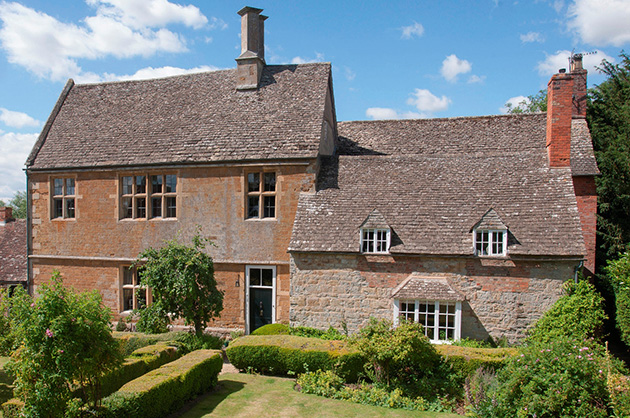
Although they are ‘reluctant downsizers’, the Brittons have decided to put their much-loved manor on the market now—through Knight Frank (01789 297735) and Savills (01451 832832) at a guide price of £1.85 million —rather than have the decision perhaps forced upon them in 5–10 years’ time.
The tiny hamlet of Barcheston, mentioned in the Domesday survey and in Shakespeare’s Henry IV, Part 2, nowadays consists of little more than its church of St Martin—noted for its leaning tower—the former rectory, the remains of the mill and Barcheston Manor and its former outbuildings, converted some years ago to four cottages and now separately owned. ‘The presence of a church in what is effectively open countryside is indicative of the fact that here was a long-since-vanished medieval village. Indeed, the large field opposite the church is still known as Old Town,’ reveals Mr Britton, who was church warden for 28 years before retiring recently.
The villain of that particular piece was one William Willington, who bought the manor in 1507, enclosed 530 acres of land and depopulated the village, as a result of which 24 people were expelled from their homes and ‘tearfully’ forced to seek food and work elsewhere. Willington made his fortune as a wool producer and wool stapler (an official responsible for the exportation and taxing of wool) and, during his lifetime, built up a substantial portfolio of properties throughout Warwickshire, Gloucestershire and Oxfordshire.
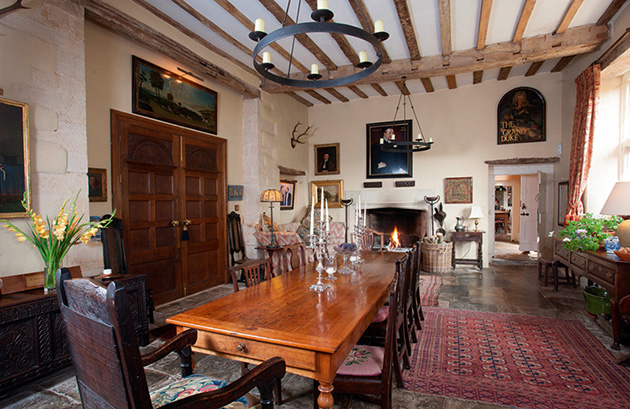
Having no male heir, he set out to improve his social position by ‘advancing his seven daughters in marriage to divers good families’. Willington’s third daughter, Mary, married, in or about 1535, William Sheldon, from an illustrious Midlands family, who went on to establish the famous Sheldon tapestry workshops at Barcheston Manor. The manufactory closed down in about 1611, although the manor itself remained in Sheldon family ownership until the early 19th century.
Nevertheless, the importance of the Sheldon workshops in introducing tapestry weaving to England was underlined by the sale at Christie’s in June 2007 of a fragment of a late-16th-century Sheldon county map for an astonishing £93,600. Once sold out of Sheldon family hands, the manor, then described as ‘lately rebuilt’ was offered for sale in April 1797, but twice failed to sell. Thereafter, it was mainly rented out and was semi-derelict when, in 1981, Mr and Mrs Britton bought it with some eight acres of gardens, orchards and paddocks, from the Beecham family.
Exquisite houses, the beauty of Nature, and how to get the most from your life, straight to your inbox.
During their tenure, the Brittons have sensitively restored the house and enhanced its unspoilt character, converting, for example, the 19th century kitchen into a loggia linking the interior with the Italianate garden outside. With a manageable 4,852sq ft of timeless, quirky living space on three floors—including four reception rooms, five bedrooms, three bathrooms and three attic rooms—this is a house for a connoisseur, who will hopefully resist the temptation to ‘improve’ it to within an inch of its life.
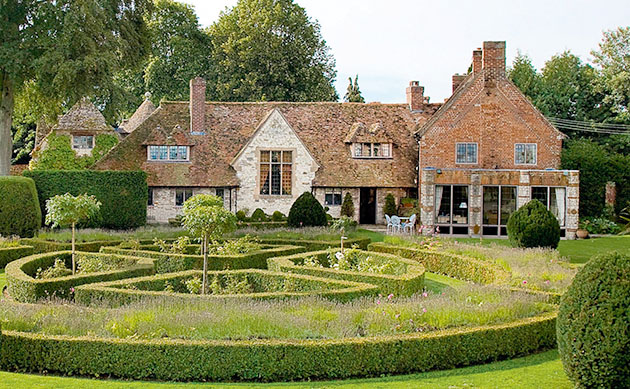
Savills (020–7016 3780) and Knight Frank (020–7861 1080) are also joint agents in the sale of the ancient and intriguing Cantorist House, with 75 acres of formal gardens, paddocks and farmland on the edge of the village of Childrey, at the foot of the Lambourn Downs, three miles from Wantage, Oxfordshire.
The agents quote a guide price of £3.85m for the substantial mixed-use property, whose origins date back to 1368, when Sir Edmund de Childrey was authorised to build a chantry house to the east of St Mary’s church, although the oldest parts of the present building date from the late 1400s.
At that time, William Fettiplace was Lord of the Manor of Childrey and lived at the manor house with his wife, Elizabeth, a Berkshire heiress. William had little interest in public life and apparently spent his life caring for the needs of his family and tenants. When he died in December 1528, he left a large landed estate to Queen’s College, Oxford, on condition that the college endow a chantry in his memory, with a priest, assisted by three almsmen, all of whom lived in what was then called Chantry House.
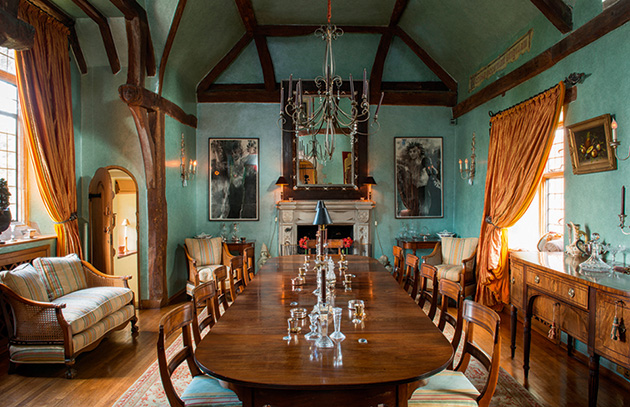
Nineteen years later, all chantries were abolished, but, thanks to William’s foresight in leaving the property to an Oxford college rather than a monastery, much of the building survived as Cantorist House, which was extended in the Tudor period and again in the 18th century. The east wing of the house is probably a 20th-century replacement of the original timber frame.
After 1723, Cantorist House became a farmhouse, was bought by Corpus Christi college in 1811 and sold again in 1857. It was later acquired by the composer Henry Balfour Gardiner, who donated it to Liverpool Cathedral, which sold it for its building fund in 1933. Since then, the house has been in private hands.
The present owner, who bought Cantorist House, listed Grade II, in the mid 1990s, has had the 3,800sq ft main house, its cottage and nearby Tower House beautifully renovated and rearranged as independent areas, each with its own entrance and heating system. A magnificent thatched barn to the east of the house has been converted to a games room and additional entertaining space.
‘This is a unique house with a wonderful atmosphere, but perhaps its greatest asset is the fact that, despite its proximity to the village, there is absolutely no road noise whatsoever —a rare bonus in a busy county like Oxfordshire,’ comments selling agent Lindsay Cuthill of Savills.
Buy Vivien Leigh’s country house
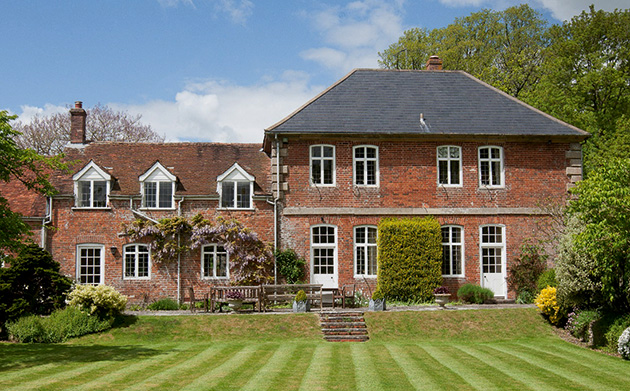
For sale through Savills (01722 426880) at a guide price of £2.6m for the whole, secluded, Grade II-listed Manor Farm House at Lower Zeals, near Mere, Wiltshire, stands at the end of a quiet lane, protected by its own 16 acres of land and the ancient parkland of neighbouring Zeals House, which is mentioned in Domesday. The early history of Manor Farm is less well documented, although, in the late 17th century, it was evidently one of the wealthiest farms in the area, with an impressive concentration of four tithe barns.
Nowadays, its main claim to fame is its association with the late actress Vivien Leigh, who was married, from 1932 to 1940, to Herbert Leigh Holman and, even after their divorce, regularly visited him and their daughter there right up to her death in 1967.
The handsome, seven-bedroom, Queen Anne house with its twocottages, four beautiful stone barns, outbuildings and stables is being sold on behalf of Miss Leigh’s grandchildren.

